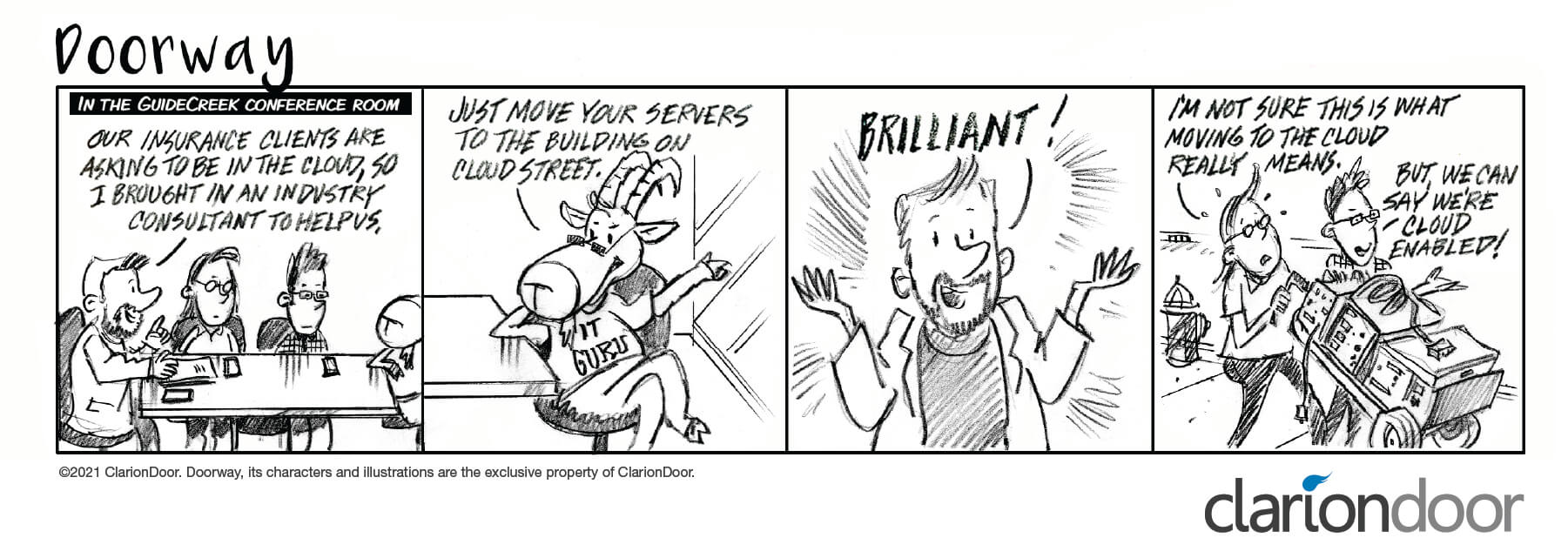Although the concept of cloud computing has been around since the 1960’s, it wasn’t until 2006 when the modern understanding of “the cloud” became accepted. Even then, very few truly understood what “cloud” meant from a technical and business perspective, and that is especially true in the insurance industry.
Back then, insurance companies were accustomed to on-premise solutions which required massive IT to manage all aspects of their infrastructure, including hardware and software. There are a couple of reasons why this was the accepted norm. First, insurers had massive amounts of analytical data on their policyholders and they wanted to ensure that data was secure and accessible. Second, there just weren’t any other options at that time, and the thought of cloud-anything was scary.
By 2010, cloud options had matured enough that doubts previously raised by insurance companies were dissipating; however, there was still a hesitancy to transition from on-premise to the cloud.
As a workaround, insurance technology vendors began offering “hosting” within their own data centers. It gave the impression of a cloud service, but was still built around on-premise architecture.
Fast forward to today – insurance companies are still battling with cloud options, and many of the industry vendors continue to offer non-cloud solutions under the guise of being cloud-enabled. Fortunately, there are some key signals you can look for to avoid this common trap.
When vendors use terms like cloud-enabled, you can be sure that their solutions are not architected for the cloud and as a result, you will not gain the technical benefits that cloud offers.
Cloud-native software is designed with cloud-computing principles and leverages the full benefits of auto-scaling, dynamic performance tuning, and so on.
Traditional software that was architected for on-premise use, will only and always function as an on-premise solution regardless of where it is hosted.
The ClarionDoor Experience
When ClarionDoor was founded, we saw cloud computing as the future of insurance technology, and that insurance software needed to be architected from the ground up with APIs.
At ClarionDoor, all of our software is API-first and always, and 100% cloud-native – built and architected for the cloud exclusively on AWS.
Follow us on LinkedIn and Twitter for updates on ClarionDoor.

